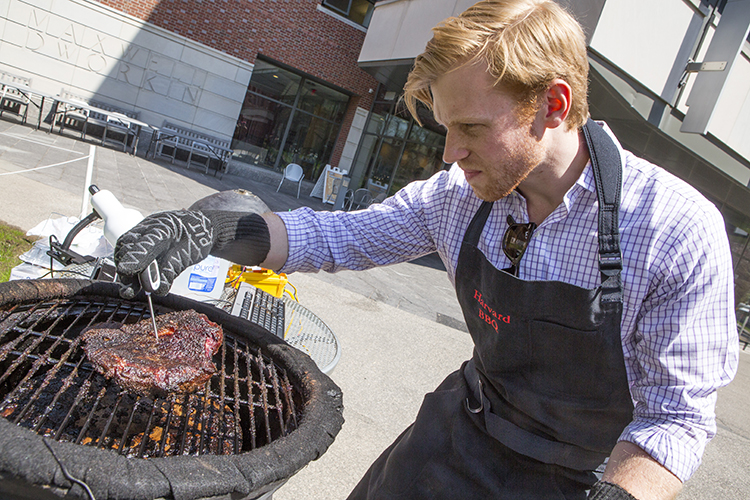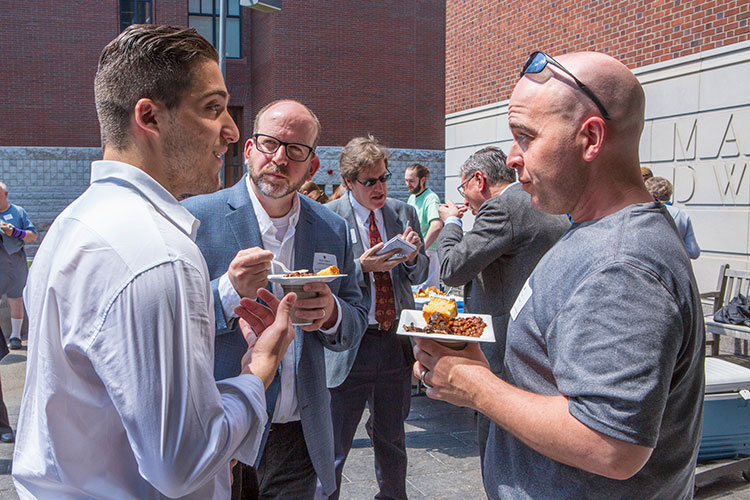See definition in Oxford Advanced Learner's Dictionary
Line breaks: bris|ket
Pronunciation: /ˈbrɪskɪt/
Definition of brisket in English:
noun

Peyton Nesmith G3, teaching fellow for ES96, makes final preparations prior to the taste test between the brisket cooked in the commercial competitor and the one cooked by the Harvard smoker.
Students in ES96 (Engineering Problem Solving and Design) are asked to tackle a specific design problem for a real client. In Prof. Kit Parker’s ES96 class this semester, the client was high-end cooking supplies retailer Williams-Sonoma, and the challenge was to create an easy-to-use, software-enabled, “smart” smoker that could be marketed for under $1,000 and would out-perform the industry-leading product (a kamado-style ceramic charcoal barbecue cooker called the Big Green Egg).
After consulting chefs and experts in ceramics, heat transfer, and food chemistry, and test-smoking more than 200 pounds of brisket during 13-hour cooking experiments—typically starting at 3 a.m. and conducted during Boston’s snowiest winter on record—the students developed a novel prototype. Their smoker addresses the biggest weaknesses identified in the comparison product: non-uniform heating.
The Harvard Smoker uses a hyperboloid (hourglass) shape inspired by the design of power plant cooling towers. The design increases the structural stability while producing a cyclonic airflow around the cooking surface, consistently bathing the meat in the flavor-imparting smoke. Meat is cooked at a lower and more consistent temperature. The students' design also features a side-access refueling chute that can be used during the cooking cycle without disturbing the smoking process and a water pan for added humidity. A temperature- and weight-sensitive cooking surface and fuel gauge notify the user, through a smart-phone interface, of the status of their meal.
After the students’ final presentation, members of the Harvard community, representatives from Williams-Sonoma, and guest lecturing chefs were treated to a brisket lunch and taste test behind Maxwell Dworkin.

Michael Maalouly ’16 (left) celebrates the end of the semester with Peter Degnan, Director of Product Development at ES 96 client Williams-Sonoma, Inc., and Jeff Pond, Area Four and A4 Pizza chef and partner and ES96 guest lecturer.
沒有留言:
張貼留言